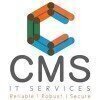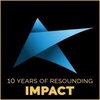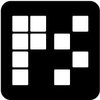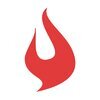Filter interviews by
FAST Interview Questions and Answers
Be the first one to contribute and help others!
Interview questions from similar companies

Business Intelligence Analyst Interview Questions & Answers
Polestar Solutions & Services Indiaposted on 3 Dec 2024
I applied via campus placement at Maharaja Agrasen Institute of Technology, Delhi and was interviewed in Nov 2024. There were 3 interview rounds.
It was a 60 minute aptitude test that had 60 qs to answer covering sections like quants, verbal, logical reasoning and some general programming. There was a 0.5 mark negative marking as well for each wrong answer. It was easy test
(4 Questions)
- Q1. Resume based qs like what certifications you did, your best project till now
- Q2. An aptitude problem was also given related about relative speed concept to check logical thinking
- Q3. Analysis of xyz company customers invoice dataset
- Q4. Some gfg puzzles, basic probability
(2 Questions)
- Q1. Tell about family background
- Q2. What polestar does and why you want to be a part of the team?
Interview Preparation Tips
Prepare puzzles from GFG and one of your projects to explain them in detail

Desktop Support Engineer Interview Questions & Answers
CMS IT Servicesposted on 31 Jan 2025
(4 Questions)
- Q1. Tell me your self introduction
- Q2. What is DNS
- Q3. What is letest version of windows
- Q4. How to be configured office 365
Interview Preparation Tips
job
A few things are very important while giving an interview

Senior Business Analyst Interview Questions & Answers
Quantiphi Analytics Solutions Private Limitedposted on 24 Nov 2024
I applied via Referral and was interviewed in Oct 2024. There were 3 interview rounds.
(3 Questions)
- Q1. How do you go about SDLC process
- Ans.
I follow the Software Development Life Cycle (SDLC) process to ensure successful project delivery.
I start with requirements gathering and analysis to understand the project scope and objectives.
I then move on to design, where I create a detailed plan for how the system will be built.
Next, I proceed to development, where the actual coding and implementation of the system takes place.
After development, I conduct thorough...
- Q2. What are roles and responsibilities of a BA
- Q3. How do you deduce a complex problem statement
- Ans.
By breaking down the problem into smaller components and analyzing each part individually
Identify the key components of the problem statement
Break down the problem into smaller, more manageable parts
Analyze each part individually to understand its impact on the overall problem
Consider different perspectives and potential solutions
Collaborate with team members or stakeholders to gain additional insights
(3 Questions)
- Q1. Explain the difference between BRD and FRD
- Ans.
BRD is a document that outlines business requirements, while FRD is a document that details functional requirements.
BRD focuses on what the business needs, while FRD focuses on how those needs will be met.
BRD is high-level and non-technical, while FRD is detailed and technical.
BRD is created before FRD in the project lifecycle.
Example: BRD may state the need for a customer relationship management system, while FRD will...
- Q2. How do you go about creating user stories, how do you allocate the points
- Ans.
User stories are created by collaborating with stakeholders and allocating points based on complexity and effort required.
Collaborate with stakeholders to gather requirements and understand user needs
Break down features into smaller, manageable user stories
Prioritize user stories based on business value and dependencies
Allocate points based on complexity, effort, and risk involved
Use techniques like Planning Poker to a
- Q3. What is the SOP while creating a requirement gathering doc
- Ans.
The SOP for creating a requirement gathering doc involves planning, interviewing stakeholders, documenting requirements, and obtaining approval.
Plan the requirement gathering process by identifying stakeholders and their needs
Conduct interviews with stakeholders to gather detailed requirements
Document the requirements in a clear and organized manner
Obtain approval from stakeholders to ensure alignment with business goa
(3 Questions)
- Q1. How proficient are you with using tools such as Jira, Cofluence, SQL
- Ans.
I am highly proficient in using Jira, Confluence, and SQL for various business analysis tasks.
I have extensive experience using Jira for project management, issue tracking, and agile development.
I am skilled in using Confluence for documentation, collaboration, and knowledge sharing within teams.
I have strong SQL skills for data analysis, querying databases, and generating reports.
I have used these tools in previous pr...
- Q2. How do you handle disagreements within internal stakeholders
- Q3. What values do you look in a collegue
- Ans.
I look for values such as integrity, teamwork, communication, and adaptability in a colleague.
Integrity - honesty, trustworthiness, and ethical behavior
Teamwork - collaboration, support, and willingness to help others
Communication - clear and effective communication skills
Adaptability - ability to adjust to changing circumstances and problem-solve
Interview Preparation Tips
- Insurance
- Requirement Analysis
- Stakeholder Management
Skills evaluated in this interview

Data Analyst Interview Questions & Answers
Nineleaps Technology Solutionsposted on 17 Dec 2024
I applied via Instahyre and was interviewed in Nov 2024. There was 1 interview round.
(4 Questions)
- Q1. Coalesce, SQL Order of Execution
- Q2. Given a table with fields(id, name, salary, managerId) find out the managers who have atleast 5 reportees under him/her.
- Ans.
Use SQL query to count number of reportees for each manager and filter out those with atleast 5 reportees.
Write a SQL query to count number of reportees for each manager using GROUP BY clause
Add HAVING clause to filter out managers with atleast 5 reportees
Example: SELECT managerId, COUNT(id) AS num_reportees FROM table_name GROUP BY managerId HAVING num_reportees >= 5
- Q3. How to manage large datasets in python
- Ans.
Use libraries like pandas and dask to efficiently manage large datasets in Python.
Use pandas library for data manipulation and analysis.
Use dask library for parallel computing and out-of-core processing.
Optimize memory usage by loading data in chunks or using data types efficiently.
Consider using cloud services like AWS S3 or Google BigQuery for storing and processing large datasets.
- Q4. Name few of the commonly used python libraries used by DA
- Ans.
Some commonly used Python libraries for Data Analysts are Pandas, NumPy, Matplotlib, and Scikit-learn.
Pandas - used for data manipulation and analysis
NumPy - used for numerical computing and working with arrays
Matplotlib - used for data visualization
Scikit-learn - used for machine learning and data mining
Interview Preparation Tips
- SQL
- Python

I applied via Naukri.com and was interviewed in Sep 2024. There were 4 interview rounds.
(3 Questions)
- Q1. Scenario based leadership questions
- Q2. Revenue, margin, leadership skills
- Q3. Conflict management, stakeholder management
(3 Questions)
- Q1. Portfolio management
- Q2. CI CD pipeline based questions, some other technical questions
- Q3. Stakeholder management, project metrics, leadership, team upskilling, resource management, risk management
(2 Questions)
- Q1. Solution architecture questions scenario based
- Q2. DR activity scenario based questions
(2 Questions)
- Q1. Cultural fit related
- Q2. Leadership and team handling related questions

Accountant Interview Questions & Answers
JoulestoWatts Business Solutionsposted on 28 Jan 2025
(2 Questions)
- Q1. Behavior, worst personality, useless manager
- Q2. Always keeping eyes on girls one of the worst manager
Interview Preparation Tips

(2 Questions)
- Q1. Questions about kubernetes and 5gc
- Q2. Containers and implementation of pods for 5gc
(1 Question)
- Q1. Previous company and package negotiation

I applied via Naukri.com and was interviewed in Sep 2024. There were 3 interview rounds.
1 python question and 1 sql question for coding and rest were the mcqs based on sql and python.
(2 Questions)
- Q1. Python code was asked for checking the anagrams
- Q2. Sql code asked to solve on screen share using various use cases like group by, having, count
(2 Questions)
- Q1. Python code was asked for swaping any number but without using python libraries
- Q2. Sql code was asked using concepts of rank dense,rank, partition by

Senior Product Manager Interview Questions & Answers
PlaySimple Gamesposted on 6 Jan 2025
I applied via Naukri.com and was interviewed in Dec 2024. There were 2 interview rounds.
Easy you will have enough time to solve the questions
(2 Questions)
- Q1. Tell me about yourself
- Q2. Why you want to join our company

Senior Test Engineer Interview Questions & Answers
Unify Technologiesposted on 7 Oct 2024
I applied via Company Website and was interviewed in Sep 2024. There was 1 interview round.
(4 Questions)
- Q1. Reverse the string and find occurance of character in java
- Ans.
To reverse a string and find the occurrence of a character in Java.
Use StringBuilder to reverse the string.
Use a loop to iterate through the string and count the occurrences of the character.
Use the charAt() method to access individual characters in the string.
- Q2. Write screenshot script in selenium
- Ans.
To take a screenshot in Selenium, use the getScreenshotAs method
Create a WebDriver instance
Use the getScreenshotAs method to capture the screenshot
Save the screenshot to a file using File class
- Q3. Write getter an setter method
- Ans.
Getter and setter methods are used to access and modify the values of private variables in a class.
Create a method with the prefix 'get' followed by the variable name to retrieve its value.
Create a method with the prefix 'set' followed by the variable name to set its value.
Ensure the getter method returns the value of the variable and the setter method updates the variable with the passed value.
- Q4. Opps concept and its pillar
- Ans.
Object-oriented programming paradigm and its four pillars: Inheritance, Encapsulation, Abstraction, Polymorphism
Inheritance: Allows a class to inherit properties and behavior from another class
Encapsulation: Bundling data and methods that operate on the data into a single unit
Abstraction: Hiding the complex implementation details and showing only the necessary features
Polymorphism: Ability to present the same interface
Interview Preparation Tips
Skills evaluated in this interview
FAST Interview FAQs
Tell us how to improve this page.
Interview Questions for Popular Designations
Interview Questions from Similar Companies
|
Program Associate
3
salaries
| ₹6 L/yr - ₹13 L/yr |
|
Merchandiser
3
salaries
| ₹3.2 L/yr - ₹3.2 L/yr |
|
BIW Design Engineer
3
salaries
| ₹3 L/yr - ₹4 L/yr |

CMS IT Services

iMerit

Brillio

Quantiphi Analytics Solutions Private Limited
- Home >
- Interviews >
- FAST Interview Questions








